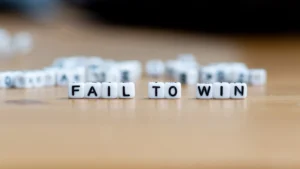Trading is not only about charts and indicators—it’s a mirror that reflects your patience, discipline, and decision-making under pressure. Every trader, regardless of experience, encounters losses. Yet, what defines lasting success is not the size of the win but the response to a setback. The traders who succeed long-term are those who learn to turn trading losses into learning wins instead of letting frustration control their next move.
A loss in trading is not the end of progress; it’s the beginning of insight. Each mistake exposes something valuable—a misjudged entry, poor timing, emotional hesitation, or weak analysis. When observed with clarity, every failed trade transforms into knowledge that improves performance. Over time, this mindset helps traders grow stronger, steadier, and far more self-aware.
The trading landscape in 2025 is more complex than ever. Markets react faster, algorithms dominate movement, and global sentiment can shift in seconds. In such a high-speed environment, emotional reactions can cost more than technical errors. To stay ahead, traders must build structured systems to analyse setbacks, regulate emotions, and recover strategically.
This article explores six proven ways to recover from trading losses that convert failure into strength. Each method is designed to help you build a mindset of growth, regain confidence, and transform losses into trading success. If you truly are keen to learn from trading losses and create a career built on consistency instead of luck, these lessons will guide you toward sustainable mastery in every market condition.
1. Analyse Trades to Learn from Losses
Every losing trade is a chance to reflect, not regret. Objective analysis separates emotional traders from professional ones. When you stop reacting and start reviewing, you begin to turn trading losses into learning wins that fuel future improvement.
Long-term success depends on structured trade analysis. You must identify what worked, what failed, and why. That means removing emotion and focusing on data. A trader who documents every move can find patterns invisible to memory alone.
How to analyse losses effectively:
- Maintain a detailed trading journal: Record every entry, exit, reason, and market condition. Track the emotions you felt before, during, and after the trade. Over time, this builds awareness.
- Review weekly trends: Compare setups and note which strategies work best in different market phases. Losses are often exposed when your system doesn’t fit current volatility.
- Identify repetitive errors: If losses repeat, they signal a blind spot. For example, entering before confirmation or ignoring volume patterns.
- Use technology: In 2025, platforms like TradingView and TrendSpider offer AI-based journaling tools that analyse trade data automatically. Use them to spot behavioural trends.
Fact example: Many traders in 2024 entered oil shorts after OPEC announcements without analysing long-term demand trends. Reviewing their mistakes later helped them build strategies for 2025 that combined fundamental and technical confirmations.
Analysing every trade objectively helps you learn from trading losses and builds self-awareness—the most powerful trading skill. When you focus on facts instead of frustration, you naturally transform losses into trading success.
2. Manage Risk to Recover Stronger
No trader can control outcomes, but everyone can control risk. Effective risk management is the cornerstone of survival. One of the most reliable ways to recover from trading losses is to minimise their impact before they occur.
Losses don’t destroy accounts—lack of control does. In 2025’s volatile conditions, smart risk allocation ensures long-term performance.
Steps to manage risk effectively:
- Set clear limits per trade: risk no more than 1–2% of your capital on a single position. This rule allows for dozens of learning opportunities without emotional pressure.
- Use proper stop-losses: Stops are not signs of weakness but of professionalism. Place them logically, below key support or above resistance—not randomly.
- Plan position sizing: Adjust trade sizes based on volatility. During high-risk news weeks, cut exposure.
- Keep a risk journal: Track your maximum drawdown and note how quickly you recover. This helps refine your capital strategy.
- Avoid emotional doubling: Increasing trade size after a loss is gambling, not trading.
Real example: In 2024, EUR/USD traders caught in ECB volatility lost big due to oversized positions. Those who capped risk at 1% preserved capital and learnt from the mistake. By 2025, they focused on quality setups, not quantity.
Good risk management keeps emotions stable. When you protect capital, you also protect confidence. That clarity allows you to turn trading losses into learning wins, and every controlled loss becomes a calculated lesson.
3. Use Psychology to Improve Trading Results
Trading isn’t only about charts—it’s about controlling impulses. Emotional bias remains the biggest barrier to consistent performance. Recognising and managing emotions is one of the most powerful trading lessons from mistakes every trader must master.
The market tests patience, discipline, and self-awareness. Emotional trading leads to early exits, overtrading, and unnecessary risk. To turn trading losses into learning wins, you must identify what triggers emotional decisions and consciously break those cycles.
Common emotional traps to overcome:
- Fear of Missing Out (FOMO): Entering without confirmation often causes early losses. Waiting for a proper signal saves both money and sanity.
- Revenge trading: Trying to recover immediately after a loss increases risk. Calm reflection is more profitable than reaction.
- Overconfidence after wins: Success often creates carelessness. Treat every trade independently; markets owe you nothing.
- Anxiety-driven exits: Closing positions too early due to fear of reversal undermines strategy confidence.
Example: During the Bitcoin rally of 2024, emotional traders bought late due to FOMO and sold early out of panic. However, those who journaled emotions realised their impatience pattern. In 2025, they use mental breaks and structured entries to remain calm.
You can learn from trading losses more effectively if you keep an eye on your emotions and identify what triggers them. Over time, mental control becomes a competitive advantage. It’s not the chart that beats traders—it’s emotion. Managing it helps transform losses into trading success through calm, consistent behaviour.
4. Refine Your Trading Strategy Regularly
A trader who is inflexible is likely to fail. Markets change daily; strategies must evolve with them. Continuous refinement ensures you stay profitable across economic cycles. To truly turn trading losses into learning wins, treat every losing streak as performance feedback, not personal failure.
In 2025, AI algorithms and machine-driven liquidity shape market conditions differently from 2020–2022. Traders relying on outdated models struggle to adapt. Updating methods ensures alignment with new structures.
How to refine effectively:
- Backtest and forward test: Use fresh data to see how your strategy performs in current volatility. Backtesting identifies weak zones before they cause real damage.
- Adapt entry confirmations: If your system relies solely on indicators, add context—price action, volume, and fundamentals.
- Study correlations: Currencies, commodities, and indices react differently in global cycles. Adjust strategies accordingly.
- Measure metrics: Monitor win rate, average gain, drawdown, and expectancy monthly. Continuous measurement ensures clarity.
Real example: In 2023, breakout traders struggled during sideways markets. By integrating ATR and RSI filters, they avoided false breakouts in 2025. Simple refinements created consistent gains.
Adaptability equals longevity. A trader who evolves always outperforms one who resists change. By refining strategies based on real data, you learn from trading losses scientifically. This process converts failure into a long-term edge, ensuring you transform losses into trading success through evolution.
5. Learn from Experienced Traders
Learning from others’ experience shortens your journey dramatically. Successful traders share lessons built from years of failure and persistence. Among all ways to recover from trading losses, mentorship and observation remain the most efficient.
Professional traders view losses differently—they see them as tuition fees paid to the market. Adopting that mindset builds mental strength.
Practical ways to learn from experts:
- Follow transparent traders: Watch live trade recaps on platforms like TradingView or YouTube. Observe how they adapt mid-trade.
- Read professional insights: Books like Trading in the Zone (Mark Douglas) and Market Wizards (Jack Schwager) detail how experts recover from mistakes.
- Join mentorship programmes: one-on-one guidance helps identify blind spots quickly.
- Study trading psychology: Learn how professionals maintain focus after setbacks.
- Network within communities: Exchange feedback in verified online groups or webinars to compare progress.
Real insight: Paul Tudor Jones emphasises capital protection: “Don’t focus on making money; focus on protecting what you have.” Traders applying this principle avoid catastrophic drawdowns.
By learning from those who’ve already stumbled, you skip costly detours. Emulating discipline, patience, and objectivity from professionals helps you learn from trading losses efficiently. Mentorship builds resilience, helping you transform losses into trading success by upgrading both mindset and execution.
6. Build a Long-Term Trading Mindset
Trading rewards those who endure, not those who rush. Every professional understands that longevity beats intensity. The ultimate way to turn trading losses into learning wins is by developing a growth-orientated mindset focused on consistent learning.
Short-term thinking fuels disappointment. A long-term approach transforms lessons into compounding improvement. Every trade, whether profitable or not, refines skill.
How to build this mindset:
- Focus on process, not profit: Measure success by how well you follow your plan.
- Embrace reflection: After each trading day, review what you learnt instead of counting pips.
- Educate continuously: Markets evolve; keep learning about macroeconomics, technology, and AI tools shaping price behaviour.
- Balance lifestyle: Exercise, rest, and family time maintain clarity—essential for high-performance trading.
- Celebrate discipline: Reward yourself for following steps, not just for winning trades.
Example: During 2024’s inflation-driven volatility, disciplined traders didn’t chase unpredictable swings. They waited for confirmations, kept capital intact, and outperformed impatient ones by 2025. Their patience became their edge.
Trading is a lifelong journey of improvement. Those who stay humble and committed to learning can effortlessly gain insights from their trading losses. Over time, patience, discipline, and analysis compound into mastery, helping traders consistently transform losses into trading success.
Final Reflection: From Mistakes to Mastery
Every trader fails, but only a few reflect. The ability to adapt separates those who survive from those who quit. In 2025’s high-speed markets, perfection is impossible, but adaptation is essential. The market doesn’t reward flawless trades—it rewards continuous learning, reflection, and discipline.
To turn trading losses into learning wins, traders must view failure as feedback. Each loss contains information about risk, timing, or mindset. When you analyse losses instead of avoiding them, you build awareness and precision. Reflection turns chaos into clarity, and discipline converts mistakes into structure.
Modern trading success depends on analysis, risk control, and emotional balance. Professionals don’t seek perfection; they seek progress. They know every loss can refine their strategy. This mindset helps traders transform losses into trading success and keeps emotions stable even in volatile conditions.
Growth begins when you stop chasing quick profits and start refining habits. With each trade review, you strengthen control. Over time, confidence replaces fear. The best traders in 2025 understand that mastery isn’t avoiding mistakes—it’s learning from them faster than others.
Key Takeaways
- Losses are lessons, not failures.
- Reflection helps traders find clarity and consistency.
- Adaptability creates long-term success in changing markets.
- Risk control protects both capital and confidence.
- Emotional discipline turns pressure into progress.
- Mindset matters more than strategy; patience builds mastery.
- Traders who continually learn from trading losses grow stronger with every challenge.
In trading, mastery is built from experience, not luck. Every loss brings insight, every reflection builds skill, and every step forward helps you turn trading losses into learning wins that last a lifetime.
Read here to learn more about “Weekend Trading Strategies for Extra Income with Full-Time Job“

I’m Chaitali Sethi — a seasoned financial writer and strategist specializing in Forex trading, market behavior, and trader psychology. With a deep understanding of global markets and economic trends, I simplify complex financial concepts into clear, actionable insights that empower traders at every level. Whether it’s dissecting winning strategies, breaking down market sentiment, or helping traders build the right mindset, my content bridges the gap between information and implementation.




